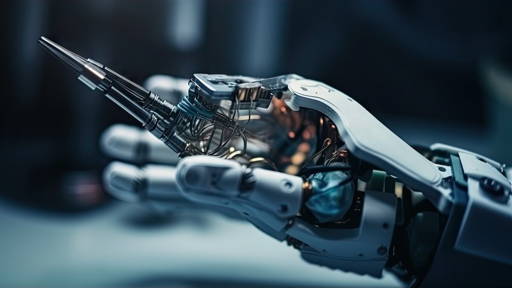The number of people 65+ (statistically burdened by five or more diseases) is increasing. However, the number of physicians and nurses is not keeping pace with the aging population – The World Health Organization predicts a shortfall of 15 million healthcare workers worldwide in 2030. This gap between the demand for medical services and decreasing staff supply is a challenge. More specifically, this may lead to the collapse of the healthcare system. The situation we faced during the COVID-19 pandemic was already a warning sign.
The only choice is to find a way to bridge the separating sides of supply and demand. All hope is in new technologies and artificial intelligence.
Big brother in the retirement home
In order to see how the care of our aging society looks in the future, we have to visit China.
As a result of the one-child policy introduced in the country 35 years ago, in 2050, the number of people of retirement age will increase to 430 million.
In order to prepare for this, the Chinese government is conducting numerous pilot projects known as virtual residential facilities. Seniors are monitored 24 hours a day using sensors in smart buildings. Artificial intelligence algorithms analyze the data and warn the carers who supervise their patients from management centers (like call centers). Once a week, a mobile team visits the elderly people to check their health status. Social robots are also being tested in some facilities, which are intended to keep them company and carry out group activities.
Similar pilot actions are slowly being introduced in Europe. For example, the Zora robot is being tested in the French Jouarre hospital. It can talk to patients, conduct exercises and moderate group games. Tests revealed that patients prefer to speak with robots about their health problems than to human doctors. In addition, they often fulfill another role – a friendly companion to prevent seniors living alone from feeling alone.
"Robots introduce some joy to our life," according to Marlène Simon (70), a resident at the experimental hospital Jouarre (France). In an interview for The New York Times, she said: "We love him and will miss him when he's gone."
The Paro robotic seal used for the care of people with Alzheimer's disease is also very popular. Scientific research has confirmed its positive impact on patients – Paro leads to improved social interactions, patients being calmed down, and enables the reduction in the dose of psychoactive and analgesic drugs used.
This is going to be the decade of robots
However, modern robots, such as Zora, cannot give medicines or feed patients, nor help them get out of bed or dressed. The real challenge is to create machines capable of carrying out more complex tasks of a humanoid, multifunctional nurse. So far, the competence range of new machines is very narrow. For instance, the robotic nurse – Moxi Robot – is able to prepare a hospital room before admitting a new patient. Still, it lacks the agility and sensitivity of human hands to be able to dress a patient in an apron.
This may change soon because the robot race is on, and more big tech companies are joining it. For example, Tesla founder Elon Musk is working on the Optimus robot intended to help in simple physical activities. In February 2023, the Chinese giant Xiaomi presented a humanoid project named CyberOne.
Technology is one thing. Creating convincing machines, which can gain human trust, is a different story. This requires combining an attractive design with authentic facial expression, the ability to talk, smooth and agile moves, and intellectual and social competencies. A robot must be able to hold a conversation, feel emotions and feelings, as well as to react to them in a proper manner. Moreover, it must guarantee confidentiality of the data gathered from the cameras and microphones. Only then can machines become our daily helpers and companions.
Today's seniors are in the last generation to enjoy the care of another human. In a few years, robots are set to permanently enter hospitals, retirement homes, and residential facilities. The choice is easy: either the cheap help of a robot or the costly help of a human.
Who will take care of an ageing society? Robots
Tuesday, April 18, 2023

transformation
News





